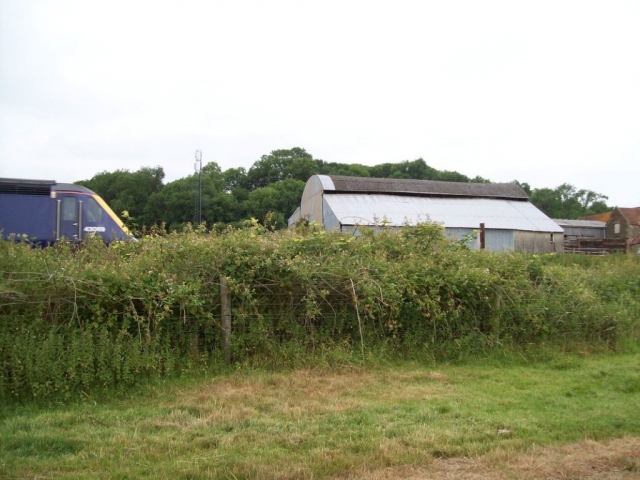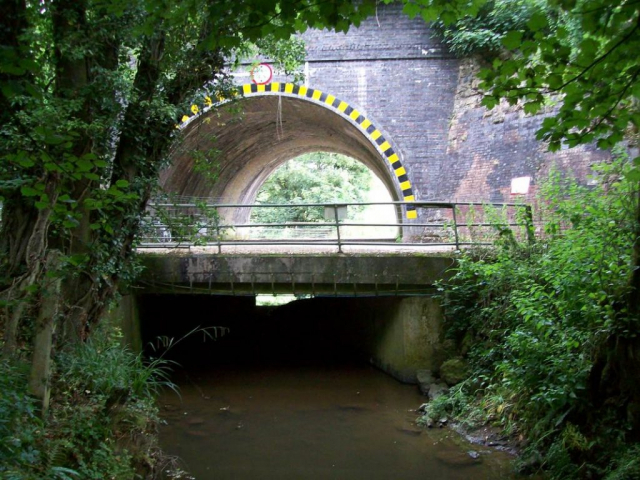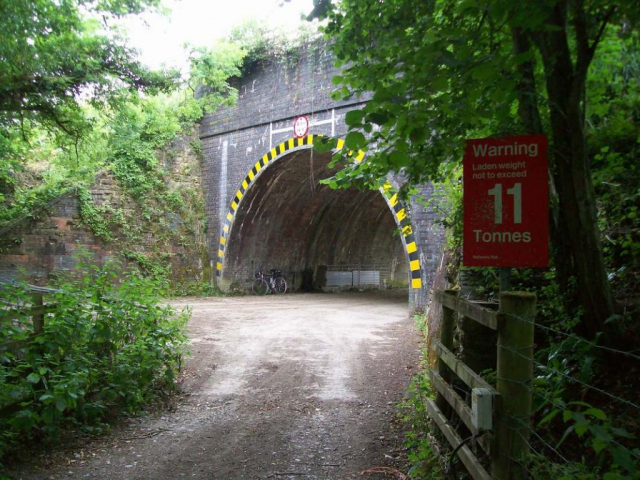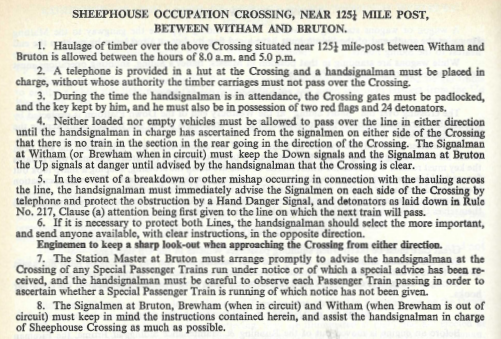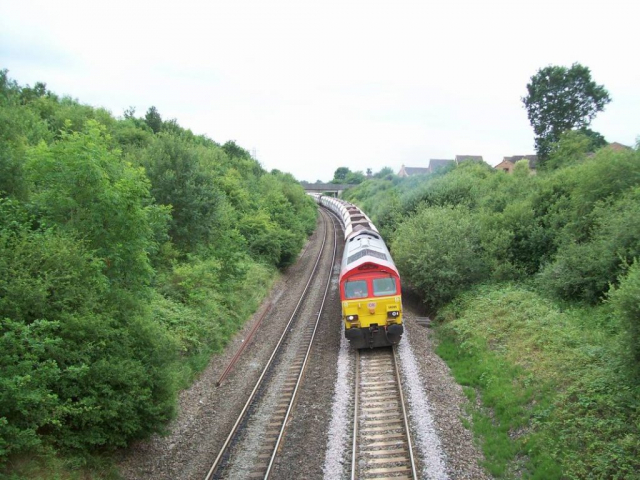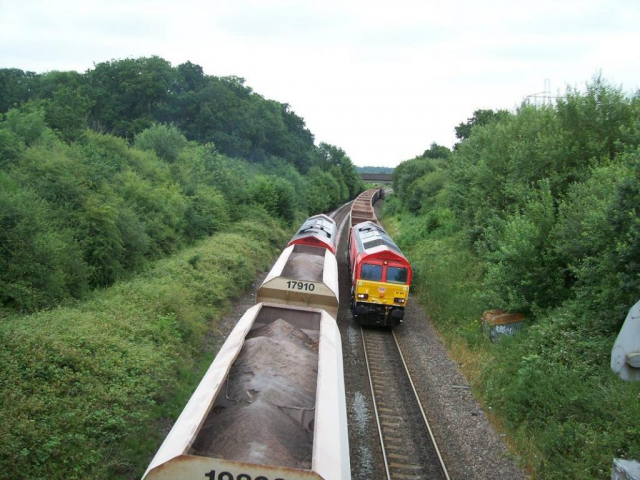To complete the scout’s route knowledge from Bruton to Westbury, on 28th June, 2017, he rode out from Castle Cary. Thundery showers were forecast but the rain held off and the sun shone for a bit.
Bruton
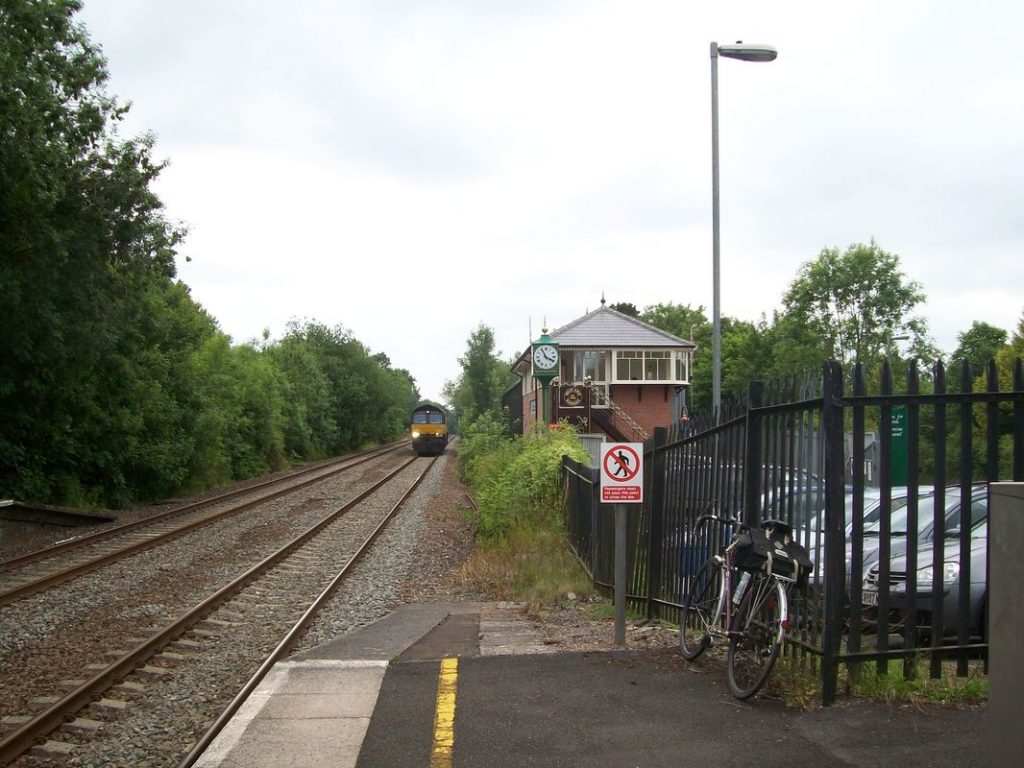
An office building, styled as a signal box, had recently been built in the former goods yard, nearly opposite where Bruton Box had stood.
It includes that most useful feature: a clock that can be seen from a distance. At most large stations, a two-faced slave clock was nearly always within sight.
Brewham Road was closed to traffic and this was blissful for the lone cyclist. When the scout reached the blockade, it was contractors working on a railway bridge and they let him through.
The scout remembered seeing the crossing keeper’s hut at Sheephouse Crossing from the train, distinctive because its nameplate was longer than the building.
After a Down train hit some cows here in early 1970s, a track was made from Sheephouse Farm to the bridge over the River Brue and the crossing was extinguished. There was also a pedestrian right of way, so strictly speaking it was a public crossing. The path was also diverted beneath the railway.
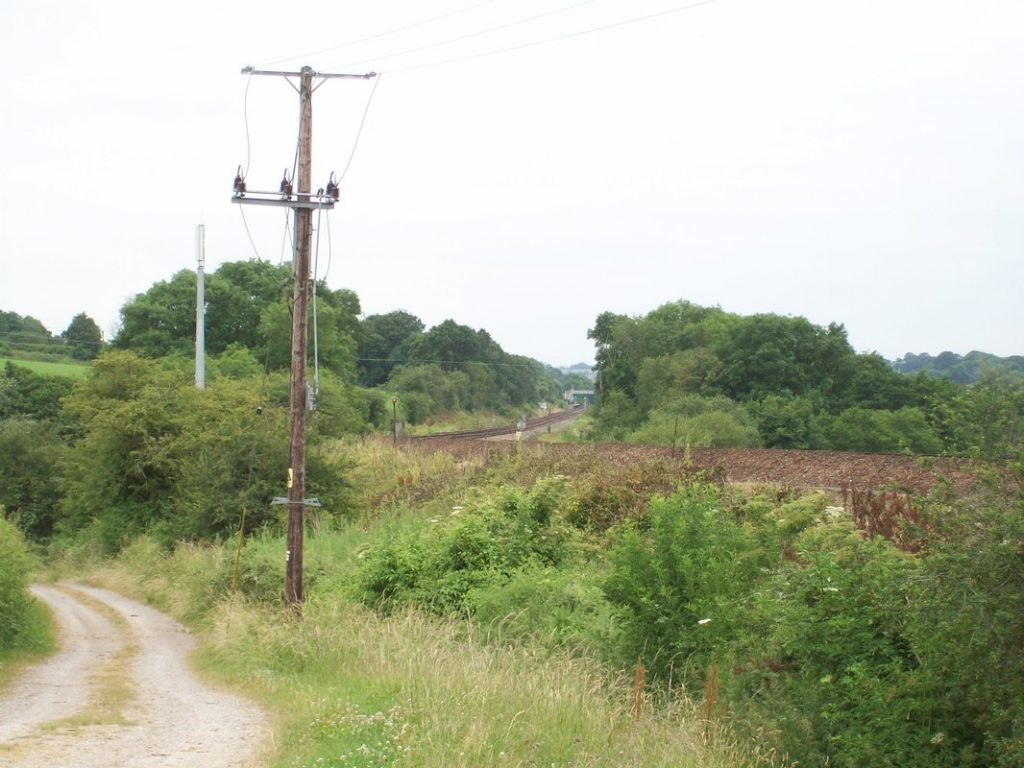
Out of sight to the left, visible from the train, is the Bruton defensive dam. The scout thought at first that this may have been part of the upstream works talked about after the 2014 floods, but he learnt that it was built in 1984 to relieve Bruton of the awful flooding it used to suffer.
The track descends to the River Brue bridge. +
The railway crosses the Brue twice more between Bruton and Cary; the S. & D. crossed it on Cole Viaduct. The river passes under Highbridge Station and issues at Burnham-on-Sea.
After lunch in the market square at Frome, the scout set off down Clink Road.
Coalway Lane Bridge, now overgrown and carrying only a footpath, looked interesting and as the scout approached it he could hear the characteristic whistling of a Class 66. This was waiting for the road through the single line junction at the head of a train of empties. Soon a loaded train emerged from the junction and accelerated rapidly away towards Westbury.
Westbury
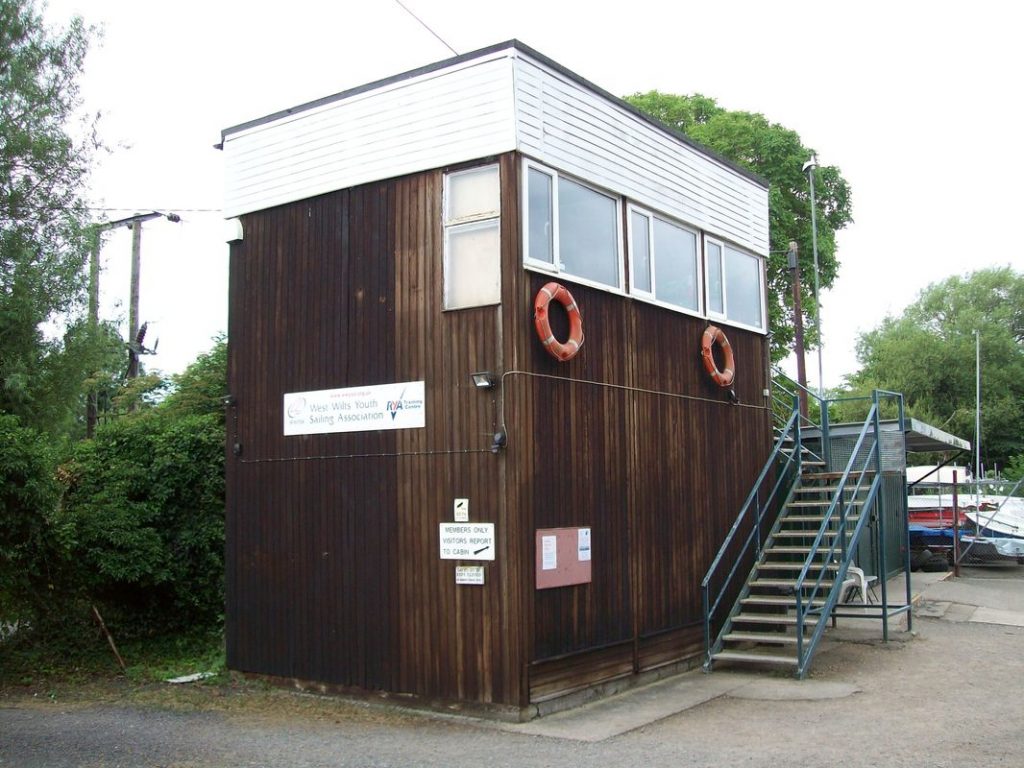
With plenty of time before the 18.04 from Westbury, the scout rode on via Dilton Marsh and Fairwood, one moment enjoying the solitude of a bridle path skirting the depot, the next caught up in the murderous “going home” traffic in a quite miserable town.
Westbury isn’t such a nice place as Castle Cary to while away an hour with a can of beer and a newspaper. The asinine announcements one after the other nearly had the scout crying, “SHUT UP!” The latest torture was: “See it, say it, sort it.”
With six empty spaces in the van, the guard of the 1804 informed the scout that he had been instructed to refuse bicycles that had not been booked; this is of course to prepare wheeling passengers for the new trains, which helpfully have fewer spaces in more than one place.
After this policy was brought in last summer, the scout dutifully booked on every train, on one occasion picking up nine tickets for three trains. Some clerks seemed to take ages making the reservations; some didn’t seem able. The scout tried not to get in the way of revenue custom so often he had to stand back from the queue. Yet not once did it make any difference; every guard he asked said he would not enforce the rule
This time, he judged from experience whether booking would be necessary; sometimes he has booked the return on the day. The scout’s was the only cycle from St. David’s and Westbury. He has noticed that the policy has suppressed demand, which is what the operator clearly wanted.
High Speed Trains were the last to be built with van space: the power cars originally had a cage for mails and parcels. Apart from a brief experiment providing two cycle spaces when the TGS was not platformed, this two-ton carrying capacity at each end of the train has run around empty for over three decades, during which time wretched white vans on the road have proliferated and the traffic that might have been carried by rail has burgeoned.
It looked like this summer would be the last in which the scout would enjoy what’s left of the old railway, flinging his bike in the van and leaning out of the window to enjoy the best air conditioning there is.
Drivers know the road, but how many have stood on every bridge and followed the roads and paths closest to the railway all the way between Westbury and Penzance?
From Castle Cary to Westbury, via Frome, is 19¾ miles. The scout’s odometer recorded 40, including four in Exeter.

